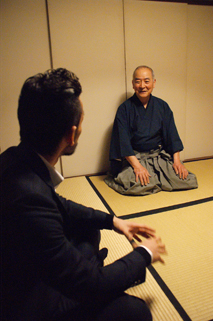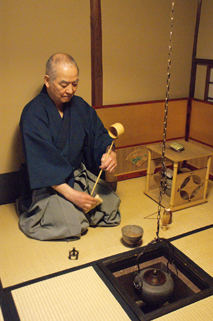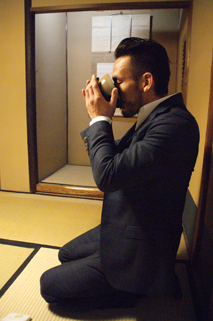 |
Two separate paths of ”sado” after Sen no RikyuTea ceremony is associated with Sen no Rikyu. ”Sado”, the ritualized tea ceremony which was refined by Sen no Rikyu, split into two paths during the Edo period. One is the ”wabi” tea, spread by Senke’s Soutan the 3rd. He further expanded the world of tea started by his father Rikyu. |
Heading to the TeaWe were then escorted through the garden towards the tea room. Once the last person entered the room, the door to the room was closed firmly with an audible sound. A small cough is a signal to the host to let him know we are all prepared. With this, Kobori Soen appeared. |
 |
 |
Don’t be so NervousAfter the tea, we relax and started a conversation. ”I was worried I would do something that wasn’t allowed.” were Nakata’s first words. |
ACCESS
- Kobori Enshu-style Tea Ceremony Shoreikai
- Tokyo
- URL http://koborienshu-ryu.com/
 Discovering Japan [Nihon] through authentic craftsmanship [Honmono]
Discovering Japan [Nihon] through authentic craftsmanship [Honmono]